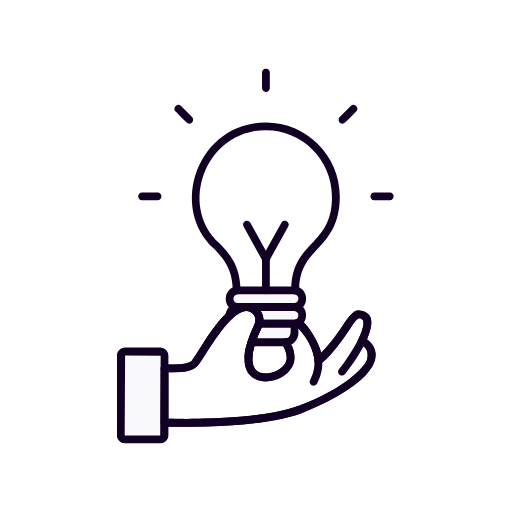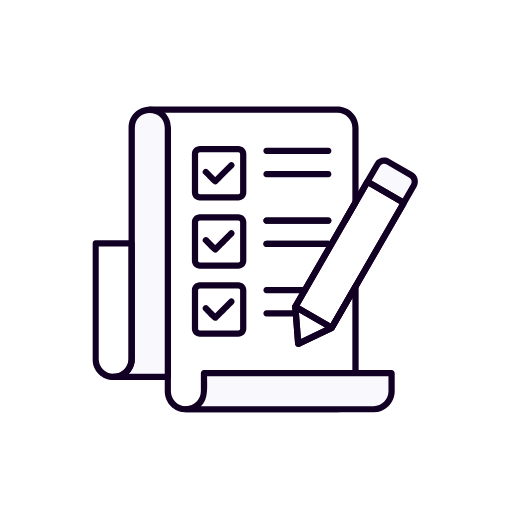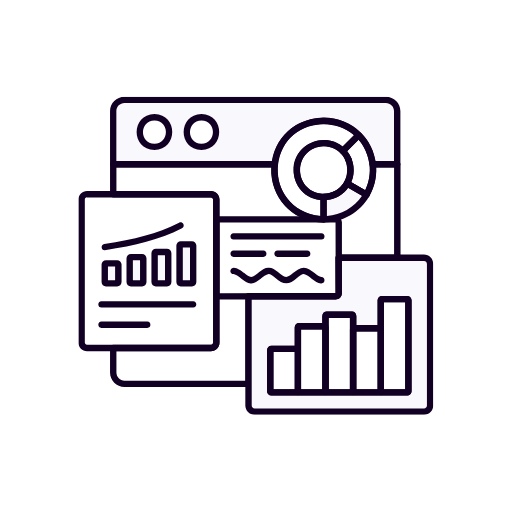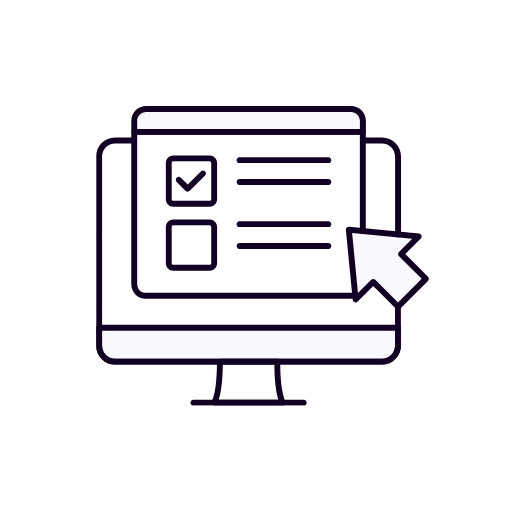Marketing Automation Workflows
AI Services > AI Workflow Automation > Smarter Marketing Automation Workflows
Smarter Marketing Automation Workflows
Transform campaigns with AI-powered marketing automation that delivers personalized journeys, faster execution, and measurable conversion boosts
Hyper-Personalized Funnels
Use AI to craft journeys that match behaviors, not guesses
Cross-Channel Execution
Automate campaigns across email, ads, SMS, and more
Performance Optimization
Real-time tweaks to maximize open rates, clicks, and ROI
Why Choose Us
AI-Driven Marketing Made Simple
Our automation workflows help you reach the right audience, at the right time, with the right message—powered by intelligent segmentation and triggers
“Octopus turned our marketing into a conversion engine—automated, precise, and impactful.”
Amina Calderon,
―Growth Manager

Full-Funnel Automation Strategy
We map, build, and optimize your marketing funnel with AI tools that trigger communications based on behavior, timing, and intent—driving engagement and conversions
- Behavior-based logic
- Funnel-wide triggers

Campaign Management on Autopilot
Launch and manage campaigns across multiple platforms with smart segmentation, timing optimization, and A/B testing—all powered by AI to deliver ROI
- Cross-channel sync
- Smart timing engine
Our Services
Explore AI-Powered Marketing Tools
From lead nurturing to campaign orchestration, our subservices automate your marketing engine to deliver speed, scale, and results

Email Automation AI
Deliver timely, personalized emails driven by behavior and engagement data

Lead Scoring Automation
Prioritize leads with AI models that rank based on readiness and interaction

Customer Journey Mapping
Use AI to visualize and automate each step of your buyer’s path

Behavioral Triggers
Send the right message at the right time based on real-time actions

Content Personalization
Serve custom content experiences at scale using audience data and AI

Retargeting Workflows
Reconnect with drop-offs through AI-driven ad and message sequences
Marketing Automation Workflows
Marketing Automation Workflows: Scalable, Smart, and Customer-Centric Engagement
Marketing automation workflows are the backbone of a modern, data-driven marketing strategy. They are structured sequences of automated actions triggered by user behavior or predefined criteria, designed to guide prospects through the customer journey and deliver relevant, personalized content at scale. These workflows help businesses automate repetitive marketing tasks, streamline communication, and deliver the right message to the right person at the right time.
At their core, marketing automation workflows enable businesses to respond intelligently to user actions. Whether it’s a welcome email for a new subscriber, a reminder for an abandoned cart, or a series of educational emails for nurturing leads, each step is automated yet personalized. The result is a marketing ecosystem that runs efficiently, engages meaningfully, and converts consistently.
Understanding the Components of Automation Workflows
The effectiveness of marketing automation workflows lies in their components. Each workflow is built around several key elements that work together to deliver seamless customer experiences.
Triggers initiate the workflow. These could be behavioral, such as visiting a product page, downloading a resource, or signing up for a newsletter. Alternatively, they might be demographic or firmographic, such as a user from a particular industry or location.
Actions are the responses triggered by the system, like sending a follow-up email, assigning a lead to a sales rep, or adding a contact to a particular list. These actions are predefined but can vary based on user behavior.
Conditions allow for branching logic, meaning the workflow can adapt based on how the user interacts. For example, if a user opens an email but doesn’t click, they might receive a reminder email; if they do click, they might move further down the funnel.
Delays are intentional pauses built into workflows to space out communications and avoid overwhelming the user. These help simulate natural, human-like interactions.
Goals define what the workflow aims to achieve, such as a completed purchase, an event registration, or a booked consultation. Once the goal is achieved, the contact might exit the workflow or enter a new one.
These components ensure that workflows are not only functional but also dynamic, capable of evolving in response to user behavior. The true power of automation lies in its ability to personalize interactions at scale, driving deeper engagement and more meaningful customer relationships.
Examples of High-Impact Workflows
Welcome Series
A welcome workflow is triggered when a user first engages with your brand, such as subscribing to a newsletter. This series introduces the brand, showcases its unique value propositions, and encourages initial interaction. These emails often include an introduction to services, client success stories, or a first-time discount offer to motivate engagement. The effectiveness of this workflow lies in making a strong first impression that builds a foundation for long-term engagement.
Abandoned Cart Recovery
E-commerce brands especially benefit from this workflow. If a customer adds items to a shopping cart but leaves without purchasing, the system automatically sends a sequence of reminder emails. These may include product images, customer reviews, urgency-driven copy, and special discounts to incentivize conversion. Timing is critical here—sending the first reminder within an hour can significantly increase the chance of recovery.
Lead Nurturing Campaigns
These are longer workflows designed to guide leads down the funnel with content tailored to their interests and behavior. For instance, a lead downloading a white paper on digital marketing might receive a sequence of educational emails followed by a case study and eventually a sales consultation offer. These campaigns build trust, demonstrate value, and position your brand as a thought leader.
Post-Purchase Engagement
Following a purchase, customers receive thank-you emails, review requests, or suggestions for complementary products or services. This not only enhances customer satisfaction but also boosts lifetime value through upselling and cross-selling. Additionally, these workflows can include loyalty rewards or referral incentives to encourage repeat business and word-of-mouth marketing.
Re-Engagement Campaigns
Inactive users are not necessarily lost opportunities. Re-engagement workflows send compelling messages to bring these users back into the fold. These campaigns might highlight new features, exclusive offers, or updates that reignite interest. Successful re-engagement requires understanding why users disengaged and offering solutions or benefits that address those reasons.
Event-Triggered Campaigns
These workflows activate when a specific date or event occurs, such as birthdays, anniversaries, or contract renewals. For example, a birthday email might include a special discount, while a renewal reminder could include a summary of value delivered over the past year. These timely messages reinforce personal connection and encourage continued engagement.
Milestone Workflows
Celebrating customer milestones such as anniversaries, subscription durations, or usage achievements helps deepen customer loyalty. These workflows can reward consistent users or customers with tailored offers, exclusive content, or simple acknowledgment messages that strengthen emotional ties with the brand.
Content Download Follow-Ups
When users download a piece of content like an eBook or webinar, follow-up workflows can be triggered to provide related materials, request feedback, or offer a demo. These workflows help keep the user engaged and push them closer to a decision point.
Strategic Benefits of Marketing Automation Workflows
Increased Efficiency
Automating routine tasks allows marketing teams to focus on strategy, creativity, and analysis. This improves team productivity and ensures that campaigns run continuously without manual oversight. Efficiency gains also lead to cost savings, as fewer resources are needed to manage large-scale campaigns.
Personalization at Scale
By segmenting audiences and using behavior-based triggers, businesses can deliver content that resonates personally with each user. This relevance drives engagement, trust, and ultimately, conversions. Advanced personalization can include dynamic content, tailored product recommendations, and individualized messaging sequences.
Consistent Brand Communication
Automation ensures that every lead or customer receives timely and consistent communication. This helps reinforce brand identity and trust across multiple touchpoints. Consistency is particularly important in building long-term customer relationships and maintaining brand credibility.
Scalability
Marketing automation workflows can accommodate thousands of users without compromising on personalization or quality. Whether you’re a growing startup or an established enterprise, automation scales with your business. This means that marketing efforts remain effective even as customer bases expand and campaigns become more complex.
Enhanced Data Utilization
Workflows collect vast amounts of user data, offering insights into behavior patterns, content effectiveness, and conversion pathways. These insights inform future strategies and help fine-tune campaigns for even better performance. Over time, data-driven decision-making leads to improved ROI and more efficient resource allocation.
Best Practices for Building Effective Workflows
Creating impactful workflows starts with understanding your customer journey. Map out each stage and identify where automation can enhance the experience. Use clear and measurable goals for each workflow, and regularly test and optimize based on performance metrics.
Personalization should go beyond using a contact’s first name. Leverage dynamic content, behavioral triggers, and lifecycle stages to deliver relevant messages. Keep communication frequency balanced to avoid spamming users while maintaining engagement. A/B testing can help determine the most effective timing, messaging, and content formats.
Additionally, integrate workflows with your CRM, analytics tools, and other platforms to create a unified marketing ecosystem. This ensures data consistency, enriches user profiles, and supports more effective cross-functional collaboration. Automation platforms should also support multi-channel marketing, including email, SMS, social media, and in-app messaging.
Monitoring workflow performance is essential. Use KPIs such as open rates, click-through rates, conversion rates, and customer retention to assess effectiveness. Regular audits help identify bottlenecks and opportunities for optimization. Engage with your team and stakeholders to continuously refine workflows based on feedback and evolving business goals.
Industry Applications and Use Cases
In eCommerce, automation workflows help reduce cart abandonment, increase repeat purchases, and personalize product recommendations. They also support seasonal promotions, customer loyalty programs, and back-in-stock notifications, enhancing both customer satisfaction and revenue.
For B2B SaaS companies, workflows can automate lead qualification, nurture campaigns, and onboarding sequences. These workflows improve lead scoring accuracy, facilitate timely sales outreach, and reduce customer churn by proactively addressing common issues through targeted content.
Education providers use automation to guide prospects from inquiry to enrollment. Workflows manage course promotions, admissions reminders, and post-course feedback collection, helping institutions improve student engagement and enrollment rates. Additionally, alumni engagement workflows maintain long-term relationships through event invitations and fundraising campaigns.
Healthcare organizations employ them for patient onboarding, appointment reminders, and post-care follow-ups. Automated workflows can also handle patient education campaigns, manage chronic condition monitoring, and ensure compliance with treatment protocols. Emergency communication workflows and vaccination reminders have also become critical components.
In real estate, workflows can automate property alerts, schedule viewings, and follow up with potential buyers. Automated lead capture from listing platforms, personalized property recommendations, and client satisfaction surveys further enhance the client experience. Builders and agents also use workflows to manage post-sale service requests and warranty reminders.
Hospitality brands use automation to manage bookings, send pre-arrival information, and gather post-stay feedback. Loyalty program management, seasonal offer promotions, and guest re-engagement campaigns also benefit from streamlined workflows. Corporate travel coordinators leverage automation for itinerary management and approval workflows.
Financial services leverage automation for lead scoring, compliance messaging, and personalized investment advice. Automated onboarding for new clients, portfolio performance updates, and fraud alert communications are critical for maintaining trust and engagement. Retirement planning and wealth management communications are also commonly automated.
Nonprofits use workflows to manage donor communications, event registrations, and fundraising campaigns. They can segment donors based on giving history, automate thank-you notes, and track donor engagement to tailor future outreach. Volunteer coordination workflows streamline event staffing and recognition.
Retailers benefit from workflows that support product launches, flash sales, and customer retention campaigns. These workflows drive sales through personalized product recommendations, replenishment reminders, and loyalty rewards. Supply chain notifications and store-specific promotions further localize engagement.
Travel and tourism companies automate trip planning guides, booking confirmations, and travel updates. Post-trip surveys, referral incentives, and rebooking reminders keep travelers engaged long after their journey ends. Destination-based content workflows help maintain interest and upsell travel packages.
Across all these industries, the central aim of automation remains consistent: enhance user experience, streamline operations, and drive measurable business outcomes. By aligning automation strategies with specific industry needs, businesses can unlock new levels of performance and customer loyalty.
Future of Marketing Automation Workflows
As technology evolves, marketing automation will continue to grow more sophisticated. Artificial intelligence and machine learning are becoming integral to automation systems, enabling more precise targeting, predictive analytics, and real-time personalization. Chatbots and voice assistants are adding new interaction layers, while integrations with emerging platforms ensure continued relevance and flexibility.
The future also involves greater alignment between marketing and sales through shared data and unified workflows. Marketing automation will support account-based marketing (ABM) strategies more effectively, delivering highly customized experiences to high-value clients. Compliance, privacy, and ethical considerations will drive transparency and data stewardship as core components of workflow design.
By staying ahead of these trends and continuously evolving workflow capabilities, businesses can maintain a competitive edge and deliver superior customer experiences.
Conclusion: Smart Marketing, Delivered Automatically
Marketing automation workflows are not just about saving time; they are about delivering smarter, more strategic marketing. By aligning automation with customer journeys, businesses can deliver personalized, timely, and relevant content at scale. This leads to higher engagement, improved customer satisfaction, and better ROI.
As customer expectations grow and marketing complexity increases, automation provides the structure and intelligence needed to stay ahead. By investing in marketing automation workflows, businesses not only streamline operations but also unlock new levels of customer intimacy and revenue growth.
Let your marketing run smarter, not harder—one automated workflow at a time.
Let's get started
Be part of the future
Outpace your rivals with Octopus Marketing Agency – be the brand that leads, not follows

Ask Us Anything We’re Ready To Help
Looking for answers? Browse our quick FAQs. Need more details? Explore our comprehensive guide
01. How does digital marketing help to grow your business?
At Octopus, we help businesses grow by attracting the right audience, converting leads efficiently, and building long-term customer value through targeted, data-driven digital strategies.
02. How is digital marketing different from traditional marketing?
Unlike traditional marketing, digital marketing is trackable, highly targeted, and optimized in real time — delivering measurable results, faster ROI, and deeper engagement.
03. How does digital marketing help small businesses?
We empower small businesses to compete with larger brands through affordable, scalable solutions like SEO, social media, and email automation that drive growth on any budget.
